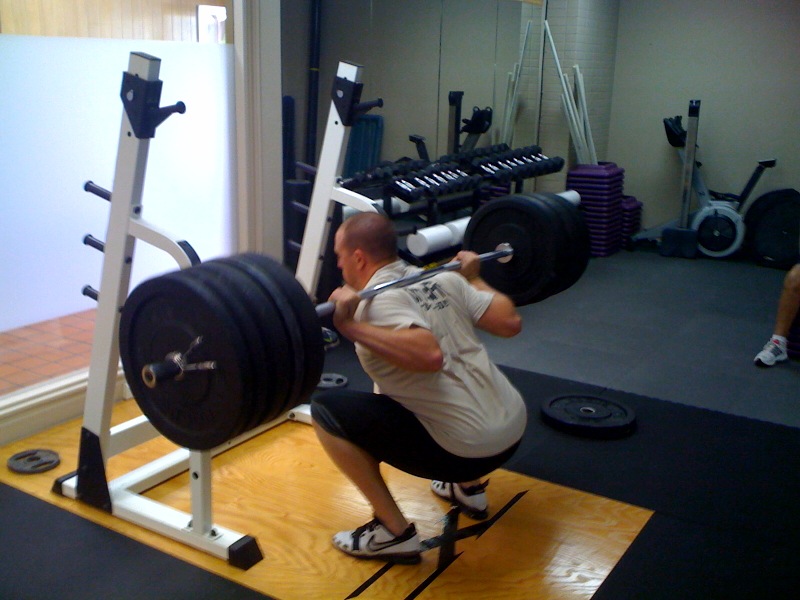There are several arguments about correct bar placement. The two main locations are "high bar" and "low bar". Both pictures you have portray a high bar placement. The trapezius isn't designed for massive loads; however, if you have the bar a couple inches lower so that the load is split across the mid scapula.

The low bar position is better suited to bearing larger loads, and once you get used to it is more comfortable than the high bar position.
Now, to answer your question, Mark Rippetoe has some good observations whether you agree with his conclusions or not:
- At lighter weights, the padding pushes the bar away from your back and changes your balance
- At heavier weights, the padding is completely compressed and provides no use
- More back muscle provides a more dense and natural platform than the padding.
I personally lift with a bare bar. I've worked my way up from squatting just the bar to currently 220lb (100kg) and will be going up tonight. There are other lifts that work to help build the back muscles to comfortably support that kind of weight. It's at this point that padding wouldn't help me anyway.
If you want to get rid of the padding, I recommend incorporating overhead presses and deadlifts (pulling the shoulders back) to build up the upper back muscles and create a stronger core. This helps you support the heavier squat weights.
I also recommend going to YouTube and watching the Rippetoe videos on how to squat. It answers many questions you may come up with. Also note the depth the woman in the picture I linked to has. Whether you squat high or low bar, you want to get that kind of depth.


